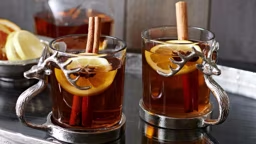
You’ve seen this—it’s St. Patrick’s Day and people all around you are buzzing about warm green beer and tasteless corned beef that “once-a-year Irishmen” have boiled way too long. That’s too bad. Good corned beef nears sainthood.
Through the years, corned beef has developed a bad rap just like turkey—it’s usually served only on special holidays. And that’s even too much. Most of what we’re exposed to now is pink, insipid, water-logged beef and lifeless cabbage, both of which displace any fresh air when boiled.
You know what I mean. Have you ever been in an apartment building that had interior halls? The kind of complex where you have to walk down a hallway to enter each apartment. Cooking odors tend to get trapped in those hallways, don’t they? It’s really easy to tell when someone is boiling corned beef and cabbage! And that smell lingers for days!
This is different! Preparing this corned beef will be different than what you’ve done in the past. First of all, you’re going to brine your own fresh brisket. You’ll know the exact quality of meat and the ingredients that brine it.
Second, you’ll also know exactly how long you’re brining the meat. With pre-packaged corned beef, there’s no telling how long meat has been sitting in the brining solution. Finally, you’ll be braising the beef in the oven—it’s a gentler, more flavorful method than harsh boiling.
The Dinner. This Corned Beef Dinner has cabbage and potatoes—but with a twist.
Brisket is a cut most of us don’t know much about. Here’s some information to take to your meat department.
What is Brisket? Brisket is the chest muscle of cattle. It’s located near the front legs, so it gets a good workout walking around and standing. This exercise makes the brisket tough, but really flavorful.
It’s also big. The whole brisket is what your butcher gets from meat processors. Then it’s trimmed into flat and point cuts. The flat cut is long and thin with a thick layer of fat on top. It’s most likely what you’ll find in stores.
The point cut is thicker, smaller, and marbled with more fat and connective tissue than the flat cut. There’s a lot of flavor there, but not as much meat—this cut usually gets ground up into hamburger.
So what should you buy? If you’re doing the corning, go for the flat cut. It’s easy to find, and you get more meat with less fat.
Now, say you don’t have time to corn your own brisket but still want to celebrate St. Patrick’s Day in style— just buy uncooked corned beef. But look out—they generally come in flat and point cuts. You’ll trim away a lot more fat from a point than a flat cut.
Corning Comparisons. It’s easy to compare corning techniques when you see them side by side.
The store-bought brisket looks like any other piece of meat—that tells you it’s been pumped full of nitrates.
Now, the other two won’t win any beauty contests. But I’ll take the brine-cured brisket (with nitrates) over the plain, salt-cured one any day.
See also Summer Cabin Recipes
Why Braising?
Boiled corned beef is out. No question, braising is best for this meat. But before we talk braising, you need to know about meat structure and what happens to meat as it cooks.Structure:
Meat is made up of muscle fibers, connective tissue, fat, and water. Like I said before, “exercised” muscles (brisket) are tough with thick muscle fibers and more connective tissue. You need to cook them differently than “lazier” muscles.
Cooking Meat:
When meat cooks, the fibers shrink as water evaporates and fat melts out—that means you lose moisture and flavor. But heat also dissolves tough connective tissue. With a cut of meat like brisket, you have to find a cooking balance—long enough to break down the fibers and connective tissue, but not so long the meat dries out. The best way to do this is with a method like braising.
Braising vs. Boiling:
Braising is a technique where tough meats are simmered in a deep pan with a little liquid. The pan is covered, creating a steam bath—moisture surrounds the meat but it’s gentler than boiling.
Boiling happens at 212°. But for braising, the temperature is lower, about 185°. So, you can braise meat longer because it doesn’t cook as quickly—more time to tenderize.
Originally, corned beef was boiled to leech out some saltiness—salt (and flavor) ended up in the water.
With braising, some saltiness is released into the liquid. But the fibers are relaxed enough to reabsorb the braising liquid—and reabsorb flavor.
So does the corned beef just soak in salt water? No. Changing the liquid during braising is a great way to keep that flavor pumping back into the meat, without all the saltiness.
Flavor Enhancers:
Sure, corned beef is salty. But there are a couple ways to enhance flavor.
Rub: An intense spice mixture is rubbed on the corned beef before braising. It’s hot—the spiciness is a nice contrast to the salty meat.
Glaze: And before serving, a sweet-hot glaze is brushed over the beef, then finished in the oven. You get a caramelized, brown coating that’s perfect against the spice and salt.
See also How to Slice Corned Beef
Corned Beef Dinner
Serves 6
Work Time: 15 Minutes
Cook Time: 3 Hours
Rub:
2 tablespoons of brown sugar, packed
1 teaspoon dry mustard
1/2 teaspoon freshly group pepper
1/2 teaspoon ground nutmeg
1/2 teaspoon ground ginger
1/2 teaspoon ground cloves
1/8 teaspoon cayeene pepper
Corned Beef Glaze:
1/4 cup brown sugar, packed
2 tablespoons soy sauce
1 tablspoon Dijon mustard
1/2 teaspoon cayenne pepper
1/2 teaspoon dry mustard
1/2 teaspoon ground ginger
INSTRUCTIONS
Place beef in large roasting pan. Combine all rub ingredients and massage over both sides of brisket— really work it into the meat.
Pour 2 cups cold water into the pan (don’t pour it over beef or rub will wash off). Cover tightly with foil, and braise in oven 1 hour.
Remove brisket from pan after 1 hour and discard liquid. Return meat to pan, add 2 cups fresh water, and cover. Braise another hour.
Drain after the second hour and replace water as in Step 4. Cover and braise a third hour. In small bowl, whisk together glaze ingredients.
Remove beef from oven; raise heat to 450°. Pour off liquid; brush on glaze. Return to oven, uncovered, 15 min. Let rest 10 min.










